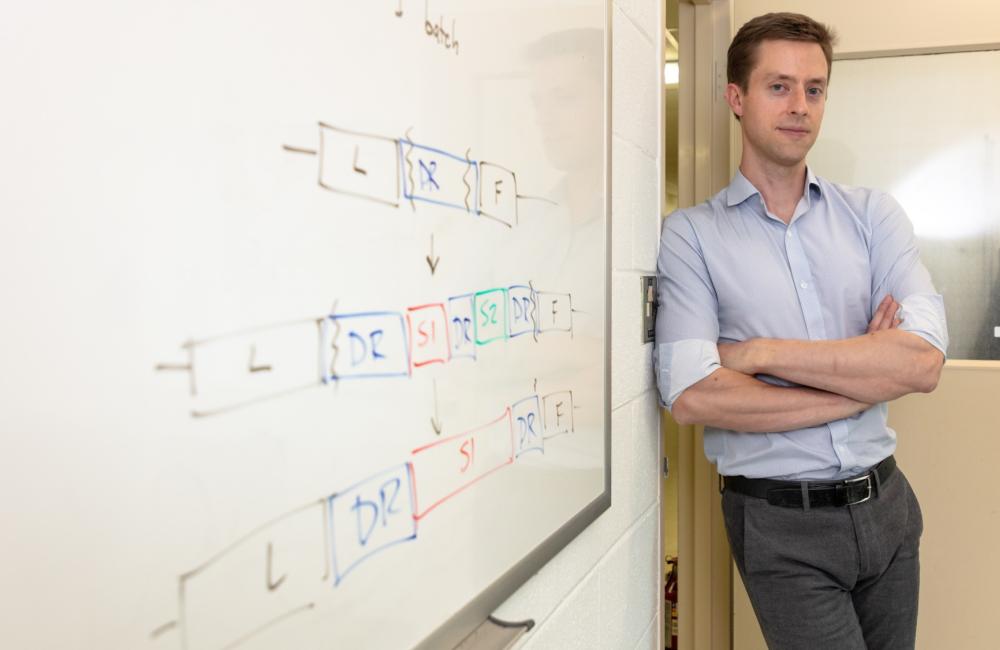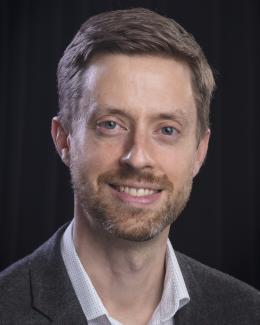Josh Michener. Image credit: Carlos Jones, ORNL
In 2019, nine ORNL early career researchers were recognized with prestigious awards from the White House and the Department of Energy—the Presidential Early Career Award for Scientists and Engineers, or PECASE, and the DOE Early Career Research Program Award. We sat down with these promising young scientists to talk about their backgrounds and current research.
When biological engineers try to genetically modify an organism, they often don’t know what most of the organism’s genes actually do.
Josh Michener wants to change that.
“I’m an engineer,” Michener said. “I want to be able to write a design and go make it. We don’t understand biology well enough to do that.”
Michener knew by high school that he wanted to pursue a career in science, but when asked which field he’d pick, his stock answer was, “I don’t know, but not biology.” That changed during his undergraduate years studying chemical engineering at the Massachusetts Institute of Technology.
“The parts of chemical engineering that most interested me were really biochemical engineering,” he said. “Then, as I got deeper into bioengineering, I realized I should learn more of the biology.”
Michener earned his Ph.D. in bioengineering from Caltech and followed it with a postdoctoral fellowship in evolutionary biology at Harvard. He joined ORNL as a Wigner Fellow in 2015.
His Early Career Award-winning proposal, “Systems metabolic engineering of Novosphingobium aromaticivorans for lignin valorization,” will examine one microbe’s capacity to break down lignin—a stubborn polymer that acts as the structural “glue” in woody plants but also becomes a low-value byproduct of biorefineries. Finding higher-value uses could help make biofuels more economically viable.
Michener will build a “parts list” of desirable genes that help N. aromaticivorans degrade lignin. To do that, he’ll use a novel genetic method to create a computational model that can predict effects of mutations throughout an organism’s genome.
The method, which Michener and his team developed at ORNL, involves randomly swapping alleles—or alternative forms of a gene—and testing their physical expressions, or phenotypic effects, he said.
He’ll also scale up his experiments, aiming to test around 100 times more strains in a single experiment than would be possible using traditional methods, which will provide ample data to build the predictive computational system he finds so exciting.
“It’s exciting to go from ‘crazy idea’ to ‘it’s actually working, and we can make discoveries with it,’” Michener said. “We have the chance to discover some new biology, some new engineering tools, and to learn to be better biological engineers.”—Abby Bower



